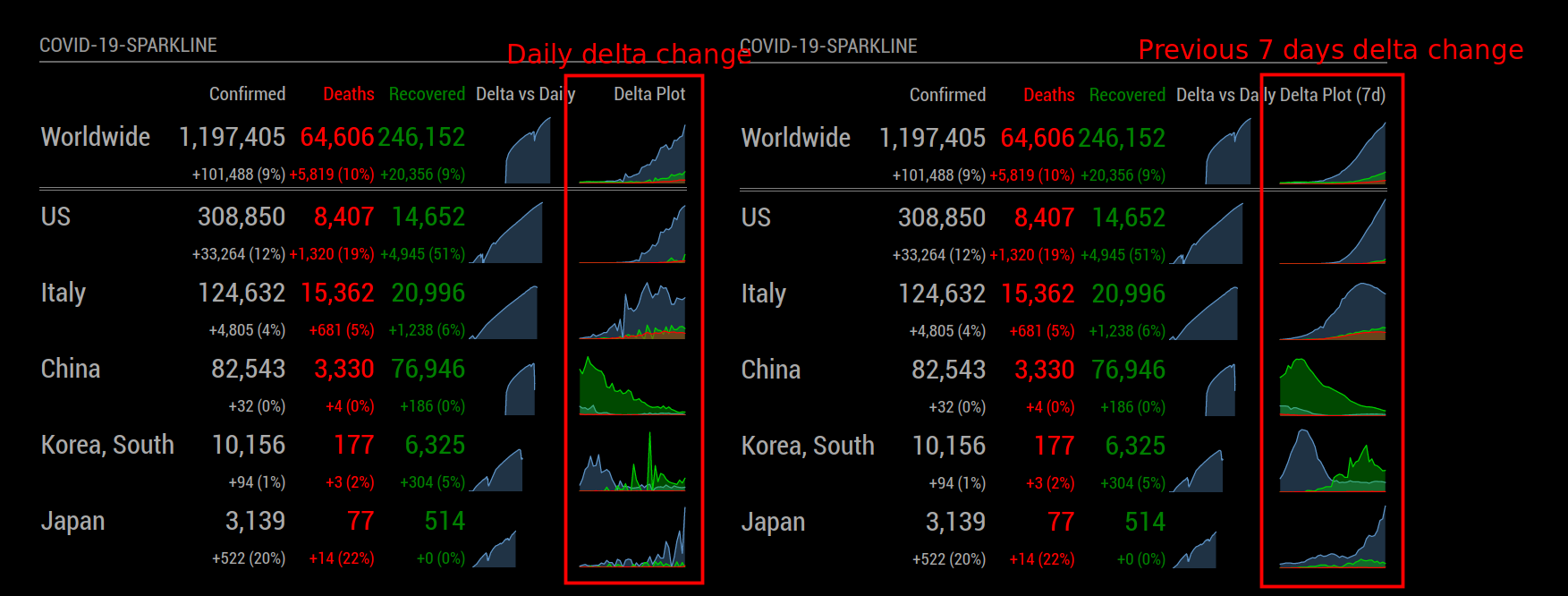@darbos if I remember correctly, Johns Hopkins has a different table for US states, so at the moment I’m only loading the country-based table.
Read the statement by Michael Teeuw here.
Posts
-
RE: MMM-COVID19-SPARKLINE
-
RE: MMM-COVID19-SPARKLINE
@cyberphox It seems you need to update the system zlib. See here: https://github.com/nodejs/node/issues/22839
-
RE: MMM-COVID19-SPARKLINE
@bhepler Thanks, that is exactly correct! Any country can be specified so long as it is in the Johns Hopkins data.
-
MMM-COVID19-SPARKLINE
Description:
Yet another COVID-19 tracker. This one adds sparklines (small graphs).4-April-2020: Added Weekly change vs. Total Cases plot (
sparklineDeltavsDaily), see this idea put forth by minutephysics in “https://www.youtube.com/watch?v=54XLXg4fYsc”5-April-2020: Added ability to show n days in delta plot (
showDeltaPlotNDays), also merged Brian Hepler’s numeric delimiter option.For the latest info please see the project readme.md file.
Credits:
This is a combination of MMM-COVID19 and MMM-COVID-19. I liked Jose’s clean look, but I liked how Sean used the github data source (the same data Johns Hopkins is using). So I used Sean’s library and Jose’s GUI and added the tiny plots.I also discovered highcharts.js while working on this; this is an incredible piece of work. (Also see MMM-GoogleFit’s use of this lib.)
Thanks Brian Hepler for adding delimiters to the data, makes it much easier to read. See option
showDelimiter.Source:
I’m not a web developer.
https://github.com/skelliam/MMM-COVID19-SPARKLINEDevelopment:
If you see something wrong, please fix it and make a pull request. I can’t promise that I’ll be actively maintaining this or responding to queries.Screenshot:

Delta Cases vs Total Cases Screenshot:
See optionsparklineDeltavsDaily.

Last n days in delta plot screenshot
The optionshowDeltaPlotNDayswill sum the previous (n) days and smooth out the delta plot, this has an effect of phase-shifting the data to the left in time, but it also helps eliminate noise. I love how the South Korea data below clearly shows two distinct curves – one indicating that their peak growth has come and gone, but a new curve showing peak growth of recoveries. This data is beautiful! :)
